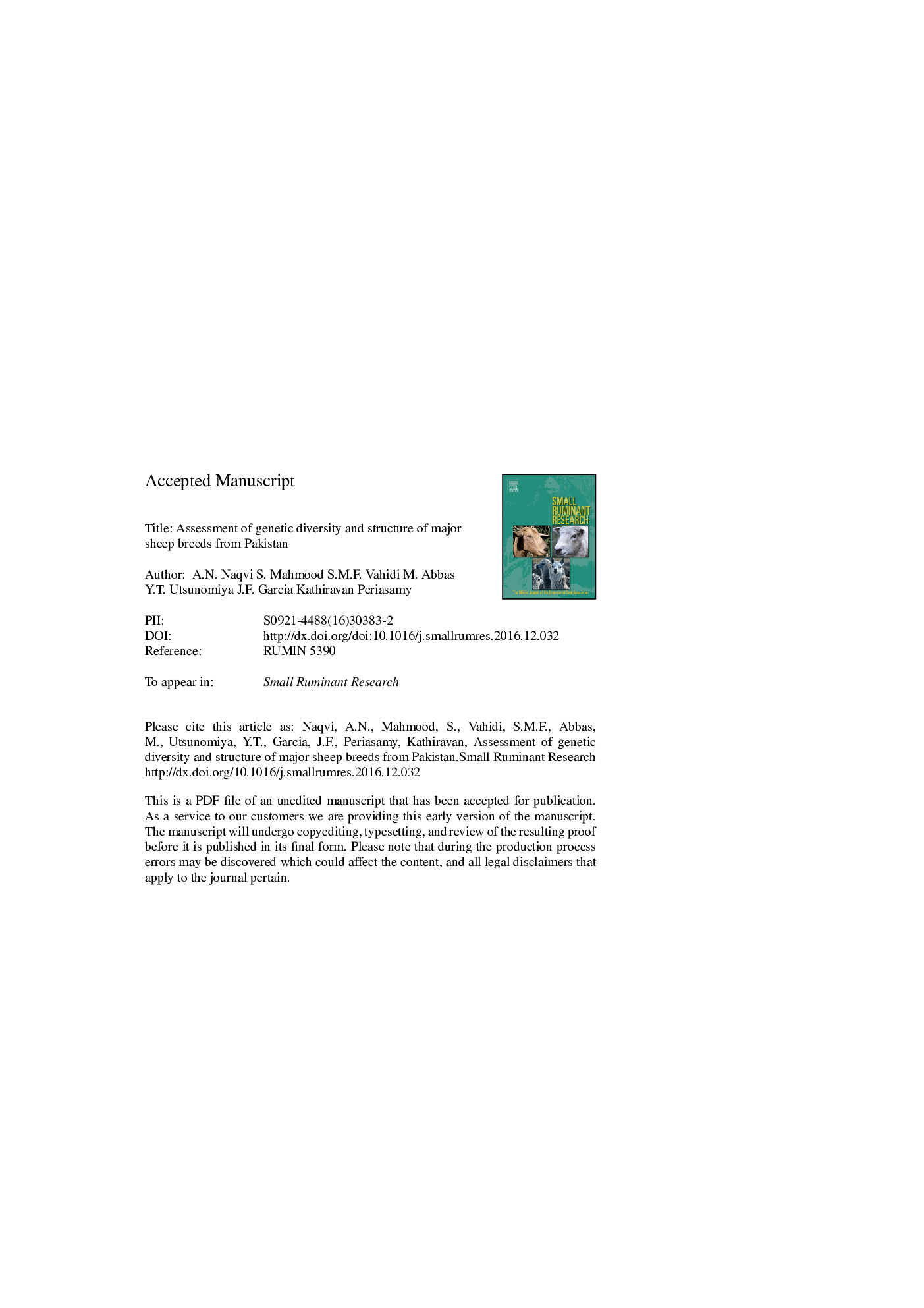| Article ID | Journal | Published Year | Pages | File Type |
|---|---|---|---|---|
| 5544239 | Small Ruminant Research | 2017 | 35 Pages |
Abstract
The present study aimed at the genetic characterization of major economically important sheep (Ovis aries) breeds from Pakistan. A total of 155 sheep from five breeds, Balkhi (PBS), Kaghani (PKS), Damani (PDS), Salt Range (PSS) and Thalli (PTS) were analyzed for measures of genetic variability, differentiation and population structure. All the five breeds exhibited moderate to high levels of genetic diversity, with an average observed heterozygosity of 0.631 ± 0.043. The mean estimates of measures of genetic differentiation between pairs of breeds were low (FST = 0.050 ± 0.015 and DA = 0.159 ± 0.028), and the analysis of molecular variance showed that most of the total genetic variation corresponded to differences among individuals within breeds (94.41%). Despite the low level of differentiation, Bayesian clustering suggested Thalli and Damani sheep were genetically distinct from Balkhi, Kaghani and Salt Range sheep. The clustering of Pakistani sheep did not conform to their geographical locations while it was broadly consistent with their utilities (meat and coarse wool vs milk, meat and coarse wool). The results also revealed migration and admixture between Balkhi, Salt Range and Kaghani sheep. This is the first report on genetic diversity of Pakistani sheep populations of economic importance and the information generated will have implications on genetic resources management and implementation of breeding programs for these sheep breeds.
Related Topics
Life Sciences
Agricultural and Biological Sciences
Animal Science and Zoology
Authors
A.N. Naqvi, S. Mahmood, S.M.F. Vahidi, S.M. Abbas, Y.T. Utsunomiya, J.F. Garcia, Kathiravan Periasamy,
